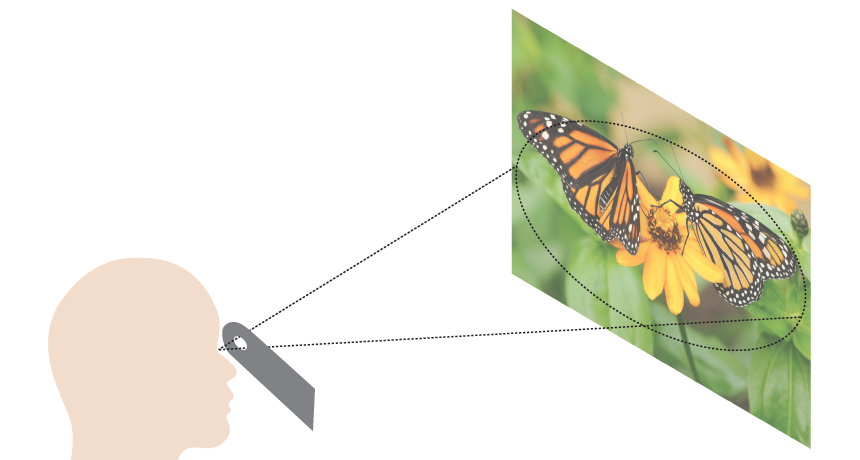One eye, 3-D
A simple trick — using one eye to peer through a small hole — may trick the brain into seeing depth in a flat picture

A flat image viewed with one eye through a small hole can appear three-dimensional, reports a new study.
Illustration: E. Otwell; Photo inset: ogphoto/iStockphoto
Want to see a 3-D movie without paying steep ticket prices? Try closing one eye. Then use the other to watch the film through a tiny hole.
In a new study, people reported that a flat scene appeared three-dimensional, or 3-D, when viewed through a small hole with one eye. Some scientists are skeptical about the finding and demand stronger evidence that the approach works.
Modern 3-D technologies use an approach that has been around for almost 200 years. They show a different image to each eye. (This is what the special glasses are for. They separate the image and allow each eye to see a separate version at the same time.) A string of such images, shown rapidly one after the other, creates a 3-D movie. Scientists suspect the 3-D effect emerges when the brain combines two images, one from each eye. This trick, however, needs both eyes to work. Indeed, that’s why such sight is called binocular vision.
Other studies have claimed to demonstrate one-eyed, 3-D vision. But the results of those studies were never taken seriously, Dhanraj Vishwanath told Science News. That’s because the researchers had tested the effect only on themselves. A psychologist at St. Andrews University in Scotland, Vishwanath studies how the brain perceives depth. He worked on the new study with St. Andrews psychologist Paul Hibbard. The two published their findings in the September Psychological Science.
The pair recruited 23 people for their tests. Each participant used one eye to view different photographs through a pea-sized hole.Twenty people reported the images appeared three-dimensional.
But a picture appeared to be 3-D only when the pea-sized hole blocked a view of the picture’s edges, the viewers reported. Vishwanath suspects that’s because in such situations, the brain is trying to determine the distances from the eyes to objects pictured in the photo — rather than the distance to the flat photo itself.
The new study proves nothing, argues Lloyd Kaufman. That’s because it relied on what people reported instead of using some outside measurement. Kaufman studies perception at New York University in New York City. He told Science News that without such measurements, he won’t be convinced one-eyed, 3-D vision is as strong as the typical method that relies on two eyes.
This experiment is an easy one for you to try: Just cover the lenses of some old glasses with black construction paper and cut a pea-sized hole in front of one eye. Then put on the glasses, sit back and wait for the movie to come to you!
Power Words
binocular Adapted for or using both eyes.
illusion An image that is likely to be wrongly perceived or interpreted by the senses.
perception Being aware of something — or the process of becoming aware of something — through use of the senses.
psychology The study of the human mind, especially in relation to actions and behavior.
skeptical Not easily convinced; having doubts or reservations.
three-dimensional (or 3-D) Having or appearing to have length, breadth and depth.







